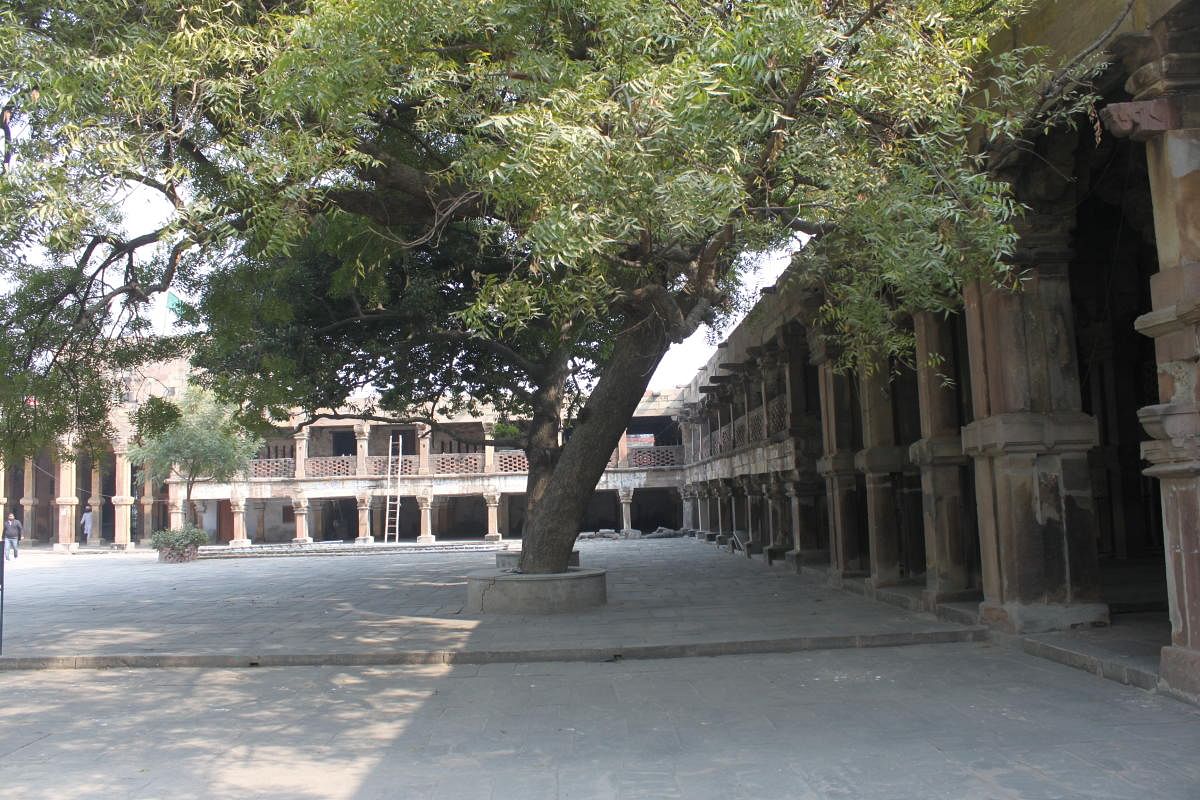
What is it about these old and large masjids that one experiences a unique peace and calm here, a colleague asked? They also appear strong enough to stand tall for another few hundred years at least, remarked another. Three of us were at the Jami Masjid in Jaunpur.
We had driven 75 kms from Banaras. From the town, we took the road heading to the airport and went further. Rail is another option: Jaunpur is
on the Lucknow–Varanasi route. However, despite this proximity to and connectivity with Banaras, Jaunpur lags far behind on the tourism front. Is
this despite Banaras or because of Banaras we wondered?
On the other hand, these monuments of Jaunpur, possibly the best remaining examples of Sharqi architecture, have been well documented more than a century ago during the British era. A report from 1900, The Indian Architecture (Islamic Period), for example, states: ‘The transept halls of the Jami Masjid present a very interesting study. Unencumbered by pillars or support of any kind, an interior provided with such a clear open space is rare in Indian architecture, and not common anywhere.’
We then moved to the Atala Masjid — the most ornate amongst the structures that remain standing in Jaunpur today. The view from the road is stunning. Inside, the neem trees and the Sharqi architecture create magic. The main gate was shut. The uncle who allowed us in from the side gate requested us to see the place before the prayers began. These are living moments — in use to this day.
Three of us walked around these masjids in awe of the craft of those who had constructed it entirely with stone, mortar, and concrete. We also sat in silence in the courtyards, looking around, with an immense appreciation of the setting, an uncommon ambience where grandeur and grace had joined hands.
We also wondered how large, affluent and culturally vibrant Jaunpur would have been when these magnificent structures were built? Jaunpur, we later read, during its prime, was famed for not only its army but for being a seat of learning — a place where architecture and arts were encouraged.
We also visited the Lal Darwaza Masjid which turned out to be lower on scales of opulence and splendour when compared to the other two masjids.
Next, we went to possibly the most striking feature of the town — the bridge over the Gomti — the river associated with Lucknow and one which meets the Ganga near Banaras. Completed in 1568, the bridge continues to enable people to cross the river. If bridges could be quaint, this multicoloured structure is one. The fascinating story of its origin is documented in another, more than a century-old report of 1889, The Sharqi Architecture of Jaunpur, thus, ‘Akbar, who was very fond of boating, during his excursions saw a poor widow lamenting loudly one night that she could not get ferried across, and the Emperor having taken her over, stationed boats at the ghat for similar purposes in the future and also remarked on the advantages of building a bridge there, somewhat disparaging the former kings for their preference of masjids.’ On the bridge, a young man suddenly came up and asked where we were from. Our response, Banaras, for some reason, disappointed him. Another stared at my camera and then asked if I could click a few of his photographs. Surprised, I politely declined. And, finally, we were at the fort — with its masjid, hammam and the baradari — where we had a chat with an uncle at one of the renovation sites. He told us that attempts were being made by the Archaeological Survey of India to adhere to the practices of the time when the fort was constructed. As a result, he added, the costs were high. The list of ingredients included methi (fenugreek), bael murabba (wood-apple jam) and gur (jaggery) among others! That late north Indian winter morning, the fort, with its quality maintenance and friendly trees, had an inviting feel. Later at a tea stall, we were told that it is a preferred place for people to walk early in the mornings.
Before we returned, we took time out for Jaunpur’s famed imartis. Imartis are distinct from jalebis, a sweet they are at times confused with. Also
known as jangris, the imartis, unlike the jalebis, are made from urad dal. With their modest appearance, they carry a taste to live for!
They were good enough for us not only to pack a few kilos but to also agree that one could visit Jaunpur only for these!